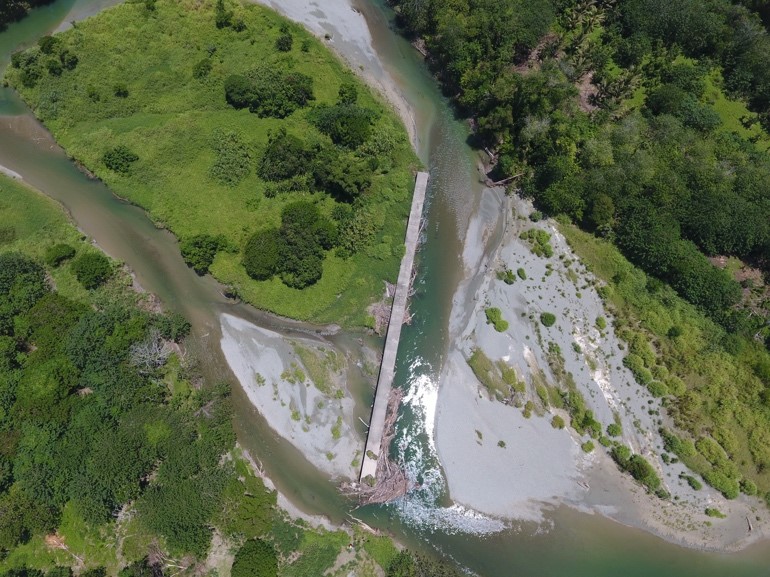Publications
Australia is committed to helping the people of Solomon Islands meet the challenge of climate change.
At the 2016 Pacific Islands Forum, Prime Minister Turnbull announced a climate change and resilience support package to the Pacific of $300 million over four years. This is part of the $1 billion climate finance Australia pledged at the 2015 Paris climate change meeting to reduce emissions and build resilience in developing countries over five years.
To take action on climate change Australia's focus is on climate research and information, building resilience to climate change and disasters, and increase country capacity to respond to disaster events. This support aligns with the Framework for Regional Development in the Pacific, endorsed by Pacific Island Forum leaders, which outlines an integrated approach to addressing climate change and disaster resilience. Australia also works to support Solomon Islands' commitments under its Nationally Determined Contribution to the UNFCCC.
Key risks and challenges
The 2017 World Risk Index places Solomon Islands sixth in the global ranking for exposure to natural hazards. Cyclones and storms strike often, causing severe flooding in recent years. Drought is also a serious threat. The 1997 and 2015 El Nino caused severe droughts in many parts of Solomon Islands.
With over 80 per cent of the population living in low-lying coastal areas, storm surge, king tides and sea level rise present significant challenges. Some northern islands are experiencing historic high king tides and swells, which damage shorelines, reefs, coastal water supplies and infrastructure.
People in Solomon Islands have built a high degree of resilience and coping mechanisms to deal with highly variable weather. This has enabled communities to prepare for, manage and recover from disasters.
However, Climate change is projected to erode coping capacity at community levels, threaten growth and critical infrastructure and undermine development gains.
Opportunities
Despite ongoing governance challenges, national climate change policies and strategies provide a basis for enhanced action and integrating climate change risks and resilience into core sectors. As does the inclusion of climate change as a cross-cutting issue in the Solomon Islands National Development Strategy 2016-2035.
Greening Solomon Islands' energy supply
Australia is co-funding the Tina River Hydropower project to provide lower and more predicable electricity costs for businesses and households, reduce fuel imports and improve energy security. Australia supported the preparatory stage ($10 million over 2009-2017) and will provide up to $18.4 million (2017-2019) during the implementation phase to build an access road. The World Bank, Green Climate Fund, Korean Import Export Bank and IRENA have committed to supporting the project. We expect the ADB to commit to support in early 2019. The project is approx. USD240 million and is expected to be completed in 2024.
Bilateral programs
Australia will provide an estimated $39 million in climate change support to Solomon Islands between 2015-16 and 2017-18.
The current Australian Aid Investment Plan (2015‑16 to 2018-19) includes a commitment to build disaster preparedness in Solomon Islands. Investments in economic infrastructure (including transport and water supply) take the risks of climate change into account and include adaptation actions.
Regional programs
Solomon Islands benefits from Australia's regional climate change programs, which total over $50 million (2015-16 to 2017-18).
Our programs work to:
- Build capacity of national meteorology services and measure sea level rise through the Climate and Oceans Support Program in the Pacific
- Improve access to and use of climate information for decision making and knowledge management through the iCLIM program
- Strengthen climate and disaster risk and resilience across key sectors, across four countries including Solomon Islands, through the Pacific Risk Resilience Program
- Support the capacity of Pacific island countries, including Solomon Islands, to access climate finance, through the German development organisation GIZ, and
- Provide technical support to integrate climate change across our programs.
Australia also provides support to the Pacific Regional Environment Programme (SPREP), whose mandate includes addressing priority climate change issues.
These programs build on our long term support for climate science in the Pacific.
Australia is also supporting the capacity of a number of Pacific island countries, including the Solomon Islands, to apply for climate finance, through the German development organisation GIZ.
Global programs
Solomon Islands further benefits from Australian global humanitarian and disaster risk reduction programs.
The Australian Humanitarian Partnership works with civil society partners to help local communities and organisations to prepare for and respond to disasters ($50 million, 2017-18 to 2021-22). Australia has also committed $5 million to the global Climate Risk and Early Warning Systems (CREWS).
Australia also contributes to global climate finance mechanisms, including the Green Climate Fund ($200 million committed over four years from 2015 to 2018) and the Global Environment Facility ($93 million committed, 2014-15 to 2017-18). These funds support a wide range of resilience building and adaptation activities in the Pacific region. Australia uses its seat on the Green Climate Fund Board and the Global Environment Facility Council to streamline processes, promote the climate change challenges and vulnerability particular to the Pacific island countries and advocate the approval of Pacific funding proposals. In Solomon Islands, the GCF has approved the co-funding of US$86 million for the Tina River Hydropower Development Project.

